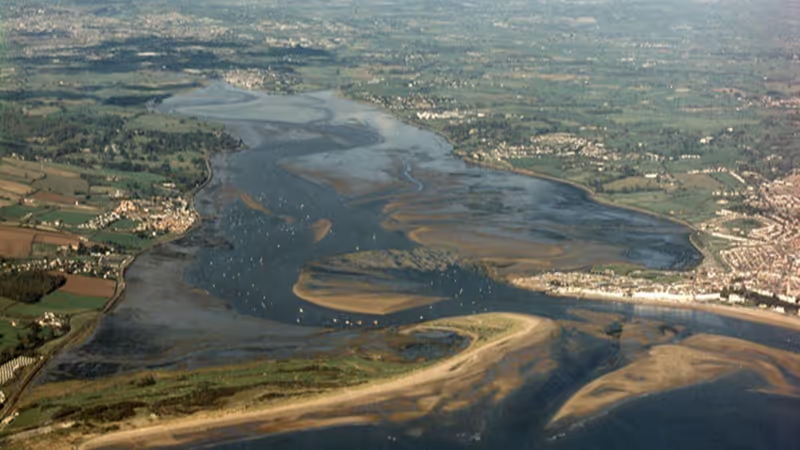Exeter City Council confirmed its decision to abandon Northbrook swimming pool at its executive committee meeting on Tuesday, diving deeper into denial despite a months-long campaign by residents which made clear that its conviction that the community facility should be closed was based on misrepresentations and missing information.
To shouts of “rubbish!” from a packed public gallery, committee members listened to council director Ian Collinson repeat a series of claims he had already made to a special meeting held the previous evening to discuss the pool’s future despite all eight of them attending that meeting.
The psychodrama continued with councillors asking council officers to repeat points they had already made in favour of closing the pool. Council leader Phil Bialyk, in the chair, who claimed that the committee’s members had been elected “to give their views”, then revisited Ian Collinson’s “comprehensive data and evidence” once more.
Infuriating many of those present, executive members each then attempted, several reading prepared confessional speeches at great length, to alleviate their guilt that things had come to this and convince those listening that they are in touch with the lives of Exeter residents after all.
 Exeter City Council executive members listen grim-faced to leisure services lead Duncan Wood
Exeter City Council executive members listen grim-faced to leisure services lead Duncan Wood
Several revealed more about themselves than they might have intended. Matt Vizard claimed he had “absolutely no doubt” that leisure services lead councillor Duncan Wood and the council officers who have worked on the closure had “the best interests of the city and our residents at heart”.
Ruth Williams, one of two Labour councillors who represent the Mincinglake & Whipton electoral ward in which Northbrook pool is located, said: “What we have to remember is that we’re not taking swimming pool provision away from the residents of Exeter”.
She also said she believed claims about pool usage that had been presented by officers because she had visited the pool on two occasions “a couple of weeks ago”.
Duncan Wood added that he didn’t want to “head up a failed service that lets down 1.8 million people a year because we’ve gone bust”.
The council’s leadership wants us to believe it has made a resounding success of running Exeter leisure since it took the service back in-house nearly five years ago. But claiming that fourteen times the city’s population – more people than live in the whole south west peninsula – depends on its delivery is a delusion too far, even by this council’s standards.
Of course, what none of the committee members confronted is the monster that the council has created in St Sidwell’s Point, looming across the street from the room in which the meeting was taking place and slowly devouring Exeter’s municipal leisure centres from the inside out.
Building St Sidwell’s Point took huge bites out of the council’s capital spending capacity, consuming developer contributions that might otherwise have been spent on universally-accessible community facilities and burdening the council with debt. And the complex has been insatiable ever since.
But it is the shadow of St Sidwell’s Point behind the misrepresentation of leisure services membership that has had the most impact on Northbrook pool’s chances of survival.
 Extract from What makes St Sidwell’s Point such an asset. Source: Exeter Labour Party.
Extract from What makes St Sidwell’s Point such an asset. Source: Exeter Labour Party.
About three-quarters of the council’s leisure services income comes from membership fees. Instead of apportioning this income to each of its six leisure centres according to their use, it allocates it according a “home” leisure centre set for each member when they sign up.
This approach misrepresents both centre usage and income, but is made much more distorting by the council automatically allocating St Sidwell’s Point as each member’s “home” leisure centre unless they actively choose otherwise during the sign-up process.
Once a “home” centre has been set leisure services users cannot change it themselves. Nor is there any incentive to do so, either when signing up or later, as every (non-spa) Exeter leisure membership entitles members to access all six centres.
Both the Exeter leisure website and the Exeter leisure app pre-select St Sidwell’s Point as every new member’s default “home” leisure centre whether they try to join for adult gym, swim or group exercise memberships, junior memberships, adult and child memberships, or annual memberships.
Even casual leisure services users, who provide much of Exeter leisure’s remaining income, must sign up for a pay-as-you-go membership which is set to default the same way.
(At Northbrook it is also impossible to account for this income properly as there are no turnstiles or other means to collect usage data. Instead lifeguards, and apparently Ruth Williams, carry out occasional head counts.)
 Exeter Leisure online membership form with St Sidwell’s Point pre-selected as “home” leisure centre.
Exeter Leisure online membership form with St Sidwell’s Point pre-selected as “home” leisure centre.
Source: Exeter City Council.
When Tess Read asked officers at Monday’s special Northbrook scrutiny meeting whether Exeter leisure sets all user’s “home” leisure centre as St Sidwell’s Point by default, Ian Collinson responded that the “factual information” in his report “is verified and is accurate, relating to usage, all of those figures”, adding: “That’s the information that officers have compiled and that we have 100% verified”.
When committee chair Catherine Rees persisted he deflected the question onto one of his staff.
She said: “It’s not accurate that it’s set to St Sidwell’s Point, the member makes their choice of home club when they join via the app, so they pick their home club.”
If you accept the council’s claims about leisure centre memberships, and its executive committee members evidently do – even though they also show that Exeter Arena, described by Duncan Wood on Tuesday as “a real gem”, has fewer members than Northbrook – then all else follows.
Ian Collinson’s hyperbolic claim that there is a “vast different between revenue and cost” at Northbrook then apparently comes true.
But even he had to admit, when questioned by council opposition co-leader Diana Moore on Monday, that the “minimum of £2.1 million” in capital investment that he claims Northbrook requires is not, in fact, based on the “quoted costs” he presented, but instead on “estimates for consideration” and “context”, derived by “extrapolation” from costs incurred in council buildings elsewhere.
When Diana Moore asked him to confirm that the investment costs in his report should therefore be disregarded because of their provenance, the chair adjourned the meeting for a break. At Tuesday’s meeting he nevertheless told the executive committee that capital investment based on his figures was “absolutely essential” even though it had “not been possible to get quotes”.
The council’s claims are similarly dubious when it comes to the subject of Sport England swimming pool funding.
In March, Duncan Wood told a council committee that its Swimming Pool Support Fund bids had failed in 2023 because it would not commit to keeping the pool open for fifteen more years, even though its lease still had 72 years to run.
At Monday’s meeting the reasons given for the council’s failure became the fund’s focus on rural use, in its first phase, even though there is no such emphasis in the fund’s published guidance, and the proximity of other pools in its second phase, even though many of the pools that received phase two awards are in large cities with several leisure centres.
Ian Collinson said the proximity argument was “definitive” when planning for new pool provision, although it’s not clear why this is relevant when considering the refurbishment of existing facilities.
On Tuesday executive members were then told by an officer that there are “at least six or seven” other nearby pools that are “very definitely available for public use in addition to our facilities”.
They were not told why, with so many other pools to choose from, the council spent £44 million building St Sidwell’s Point even though it was sold to council members on the basis it would cost less than half that much to build and be so energy efficient it would not cost anything to run, as Adrian Fullam reminded them on Monday.
Nor were they reminded by officers that shortly after its completion St Sidwell’s Point was valued at £7 million less than it cost to build.
 Exeter Leisure app membership form with St Sidwell’s Point pre-selected as “home” leisure centre.
Exeter Leisure app membership form with St Sidwell’s Point pre-selected as “home” leisure centre.
Source: Exeter City Council.
The default St Sidwell’s Point setting on Exeter leisure sign-ups means the council is allocating well over half its leisure services income to offset colossal St Sidwell’s Point running costs, although this is still not enough to avoid recording large subsidies against the complex in its accounts.
These came to nearly £2 million in 2022-23 and 2023-24, excluding the cost of servicing the debt incurred in constructing the complex, which came to another £1.2 million in those financial years. The figures for 2024-25 will be published in July. None were included in Ian Collinson’s reports.
His claim, when summarising what he presented as the financial case for closing Northbrook at Tuesday’s meeting, was nevertheless: “The figures speak for themselves”.
Mincinglake & Whipton’s other Labour councillor, Liz Pole, told Monday’s meeting she had been “grappling with the numbers”. She then floated the idea that Northbrook users have been enjoying astronomic subsidies paid by ward residents through their council tax bills.
She has since promoted this idea more widely, along with Ruth Williams’ analytic methods, claiming: “The number of swims is verified, and can easily be verified first-hand by anyone with a pair of eyes”.
Her colleague Jane Begley also suggested on Monday that 99% of the council’s leisure service users are somehow subsidising Northbrook swims.
Neither appears to have grasped that what is actually happening is that the vast majority of Exeter’s council tax-payers are subsidising all the council’s leisure services, including the fantastically-expensive St Sidwell’s Point, for the benefit of the small minority of residents that use them, many of whom are students who pay no council tax at all.
The council is not required to provide leisure services, unlike the statutory services it must provide, such as bin collections. Instead, the provision of leisure services is discretionary, like public parks.
The difference is that Exeter’s parks – when they aren’t closed to the public because they’ve been hired out – are open to all without an admission fee. All the city’s residents and visitors benefit. You have to pay to use the council’s leisure services, and only a small proportion of the city’s residents do.
 Exeter City Council executive committee votes unanimously abandon Northbrook pool
Exeter City Council executive committee votes unanimously abandon Northbrook pool
Phil Bialyk told Tuesday’s executive committee members that they “must do what’s best for all of the residents in Exeter”.
He added that his Labour group is “very, very proud” of bringing municipal leisure services back in-house in 2020, saying that the council had “invested heavily in leisure services and will continue to do so because the health and well-being of all residents in Exeter is a key priority”.
Shortly afterwards the committee voted unanimously to abandon the pool. It is expected to close in less than twelve weeks.
There may be a silver lining. Tacked on the bottom of the executive committee’s decision was a request for council officers to facilitate a discussion on the “possibility” of community pool ownership.
Whether this will succeed is in Ian Collinson’s hands. As no-one from the community was approached by the council before it concluded that it should abandon the pool, the chances of it doing so in the time that is available look slim.
The council nevertheless has a community asset transfer policy which, despite Ian Collinson’s insistence that it does not apply despite his participation in its adoption, provides a well-defined framework for community organisations to take over the running of community assets.
(The Community Right to Challenge also provides a legal framework for such an organisation to take over running council services. The council has a policy on this too.)
Ever evasive, when asked by Diana Moore on Tuesday how and when the council would update councillors on community ownership progress, Phil Bialyk’s response was that officers would report back at an “appropriate time”.
 Save Northbrook Pool campaigners dressed in mourning outside Exeter City Council’s offices.
Save Northbrook Pool campaigners dressed in mourning outside Exeter City Council’s offices.
Photo: Colleen Natola.
The day before, Diana Moore said: “Labour are washing their hands of Northbrook pool and users’ needs. They have never explored genuine options for working with the community.
She added that the party was “looking to sink a much-valued community asset that has been run down on their watch.”
Council opposition co-leader Michael Mitchell added: “We’ve seen numerous community leisure facilities sacrificed: Clifton Hill, Pyramids and now Northbrook Pool because of the deep debt Labour have amassed building St Sidwell’s Point.
“The state of the pool building is being weaponized when it is clear that a phased investment plan is possible. There are so many unanswered questions. This is no way to run a council.”
However the Save Northbrook Pool campaign deserves the last word on Tuesday’s decision.
In an email to councillors sent the following morning, one of its members said: “Very soon people will wake up and find out that their world has truly been impacted based on guesstimates, inflated figures and blatant lies.
“The word proud was used a lot last night, but the body language of those voting spoke volumes and they didn’t look proud to me.
“I do honestly believe that this side of our city has been truly neglected by councillors who talk a good talk, but have lost their spirit and forgotten why they became councillors in the first place.
“It’s a very sad day for us all.”










